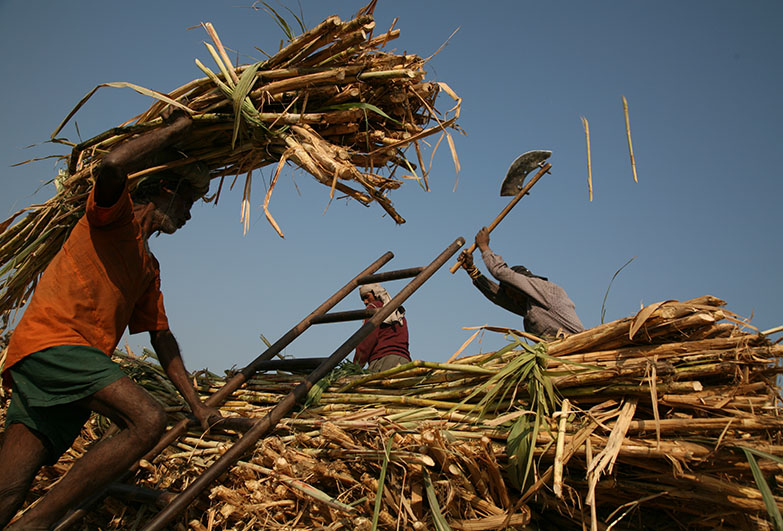
“We do not stop even if we are ill – what if our debt is increasing? So, we don’t dare to stop.
“[Other workers] tried to leave, but two got caught. They locked them up and started beating them. They told the workers, ‘If you want to go from here, you must pay 60,000, that is your debt’.”
Puspal, former brick kiln worker in Punjab, India
Puspal is one of millions of people worldwide exploited through debt bondage (also called debt slavery), which occurs when a person is forced to work to pay off a debt.
According to estimates in 2022, around one-fifth of all people in forced labour exploitation in the private economy are in situations of debt bondage. Thankfully, Puspal managed to leave her employer thanks to the support her family received from our project partners.
However, not every victim of bonded labour is able to leave – many live in fear of violence or of passing their debt on to their children.
People who experience debt bondage have often been tricked into working for little or no pay. In many cases they are forced to pay off extortionate fees associated with their recruitment, accommodation or food, with no control over the debt they have accrued. Most or all of the money they earn goes to pay off their ‘loan’.
In many cases, people who experience debt bondage work far more, and for far longer, than it should take to pay off their loans, working tirelessly without seeing an end to their debt. Recent data shows that the initial months of the Covid-19 pandemic resulted in a rise in reports of debt bondage, as many workers were unable to borrow money through formal channels.
Bonded labour has existed for hundreds of years. After the Transatlantic slave trade was abolished in the 1800s, many formerly enslaved people were forced into indentured labour – a form of debt bondage – for many years on plantations in Africa, the Caribbean and South-East Asia.
Today, bonded labour is most widespread in South Asian countries including India and Pakistan, where it flourishes, for example, in agriculture, brick kilns, mills, mines and factories. It often occurs alongside other forms of modern slavery such as human trafficking.
In some societies, debt is shared by whole families who have to work to pay off debts taken on by a relative. Sometimes, the debt can even be inherited by children, who are then held in slavery because of a loan their parents took out decades ago.
Watch our short documentary on brick kilns in India:
In the private sector, unscrupulous labour brokers and recruitment agencies can trap people in debt bondage. Some charge steep recruitment fees to workers, which can include payment to secure a job or to pay for training and insurance. These fees can lead to debt bondage, leaving workers toiling for little or no pay until the debt is repaid. Migrant workers are particularly vulnerable to this form of exploitation, for example if they are dependent on recruiting agencies.
Many people in debt bondage have their passports and other ID documents seized by their employers, leaving the workers unable to leave or in living in fear of being criminalised. Some victims of debt bondage face threats, intimidation and violence from the people that exploit them.
Although bonded labour is illegal, laws against it are rarely enforced, particularly in cases where people in power benefit directly from exploiting others.
Like many forms of modern slavery, bonded labour flourishes where corruption, poverty and discrimination are common. Limited access to justice, education and jobs for discriminated groups make it difficult for them to get out of poverty.
Learn more about our work on responsible business


